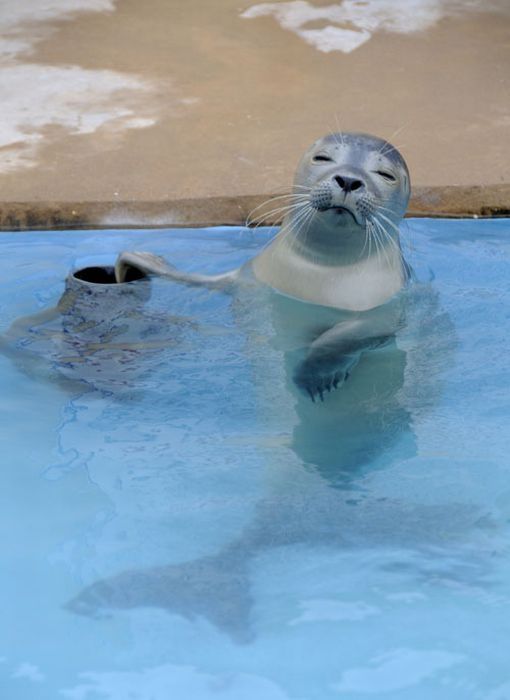|
|
Baby Seal
|
Pinnipeds living in warmer climes, such as Galapagos or Australian sea lions, must keep cool when they haul out onto land to rest, breed, and nurse their pups. Strategies include resting in the shade or in tide pools, covering themselves in a thin layer of sand ("sand-flipping"). They can also shunt blood to the surface of their flippers for rapid cooling by waving or dipping in pools.
Pulmonary Surfactant
Pinnipeds have unique lungs with airways highly reinforced with cartilage and smooth muscle, and alveoli that completely collapse during deeper dives. While over‐emptying of the lungs in humans classifies as a lung disease and terrestrial mammals are in general unable to empty their lungs, pinnipeds are able to reinflate their lungs even after complete respiratory collapse. Thus, surfactant as an anti-adhesive in the regular collapse and reopening of alveoli may be the primary function of the system in pinnipeds. It is hypothesized that the hydrostatic pressure pinnipeds experience during diving has acted as an external selection force during evolution for adaptations in their pulmonary surfactant system to meet the challenges of extreme hydrostatic pressure and regularly collapsing lungs. It has been argued that a surfactant complex that functions as an antiadhesive needs to be fluid and highly spreadable. When the surfactant systems of different pinnipeds were analyzed and compared to terrestrial mammals, and pinnipeds show changes in surfactant composition and secretion that are likely adaptations for an efficient surfactant system that can deal with the pressures of collapsing lungs.
|
|









